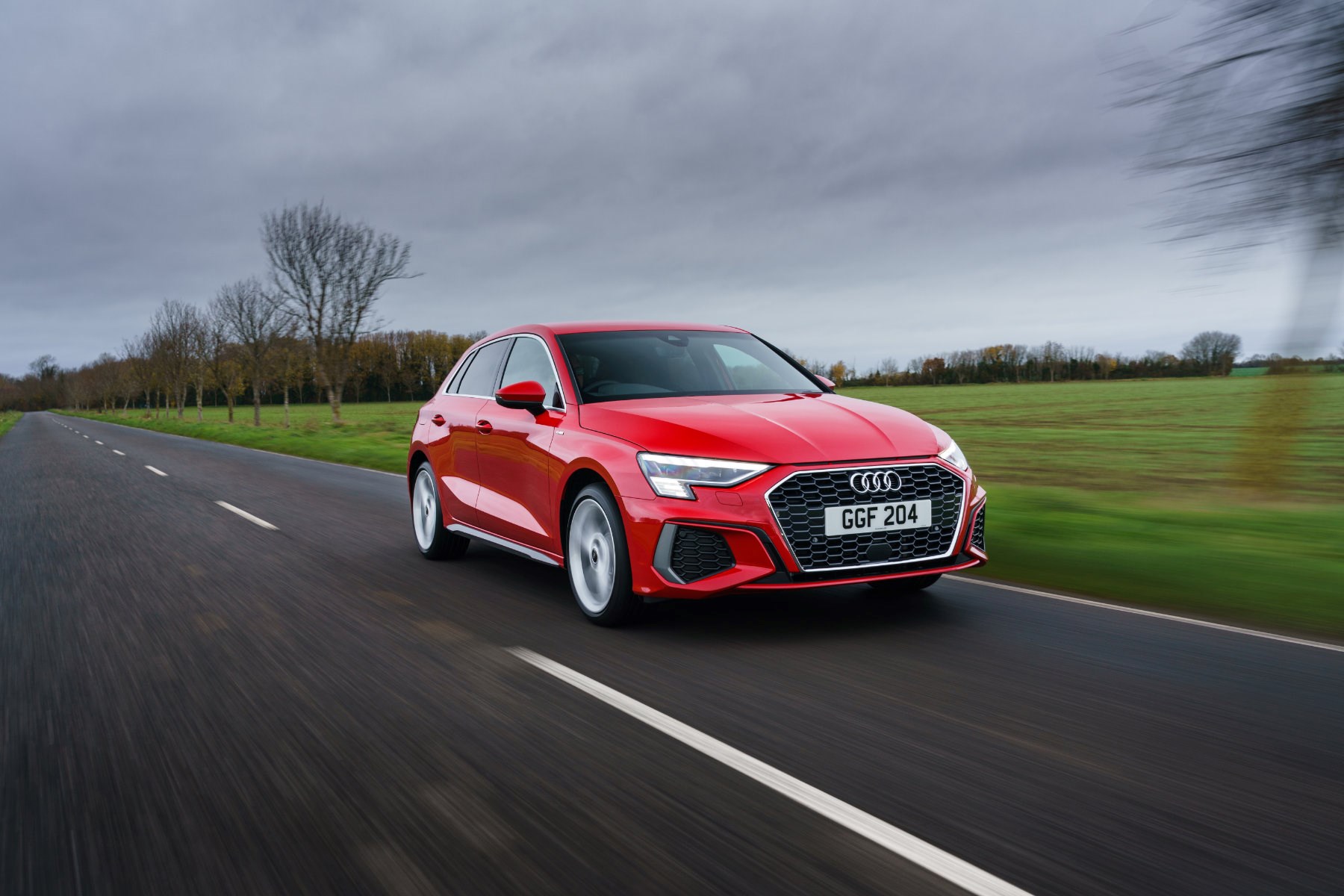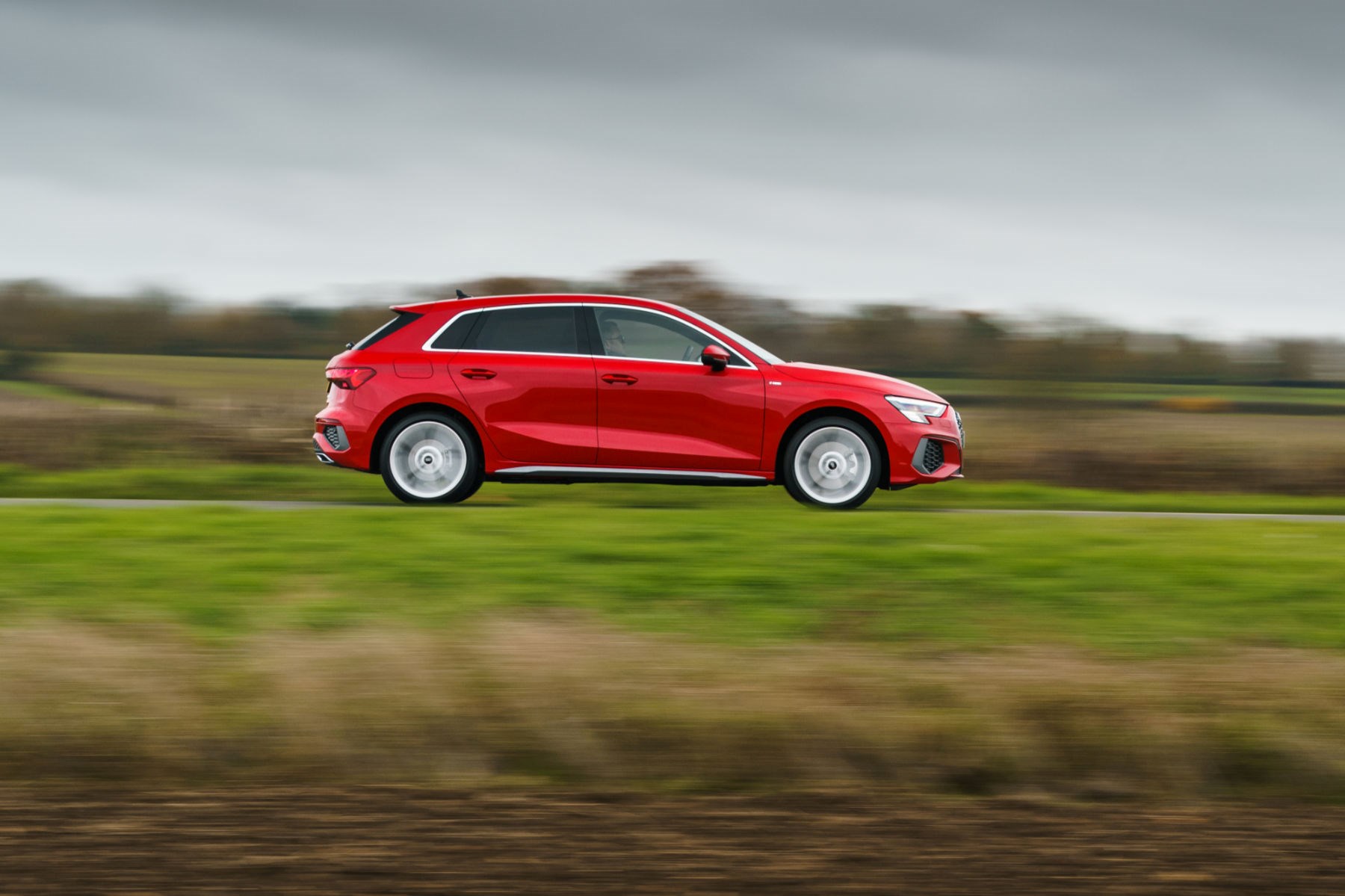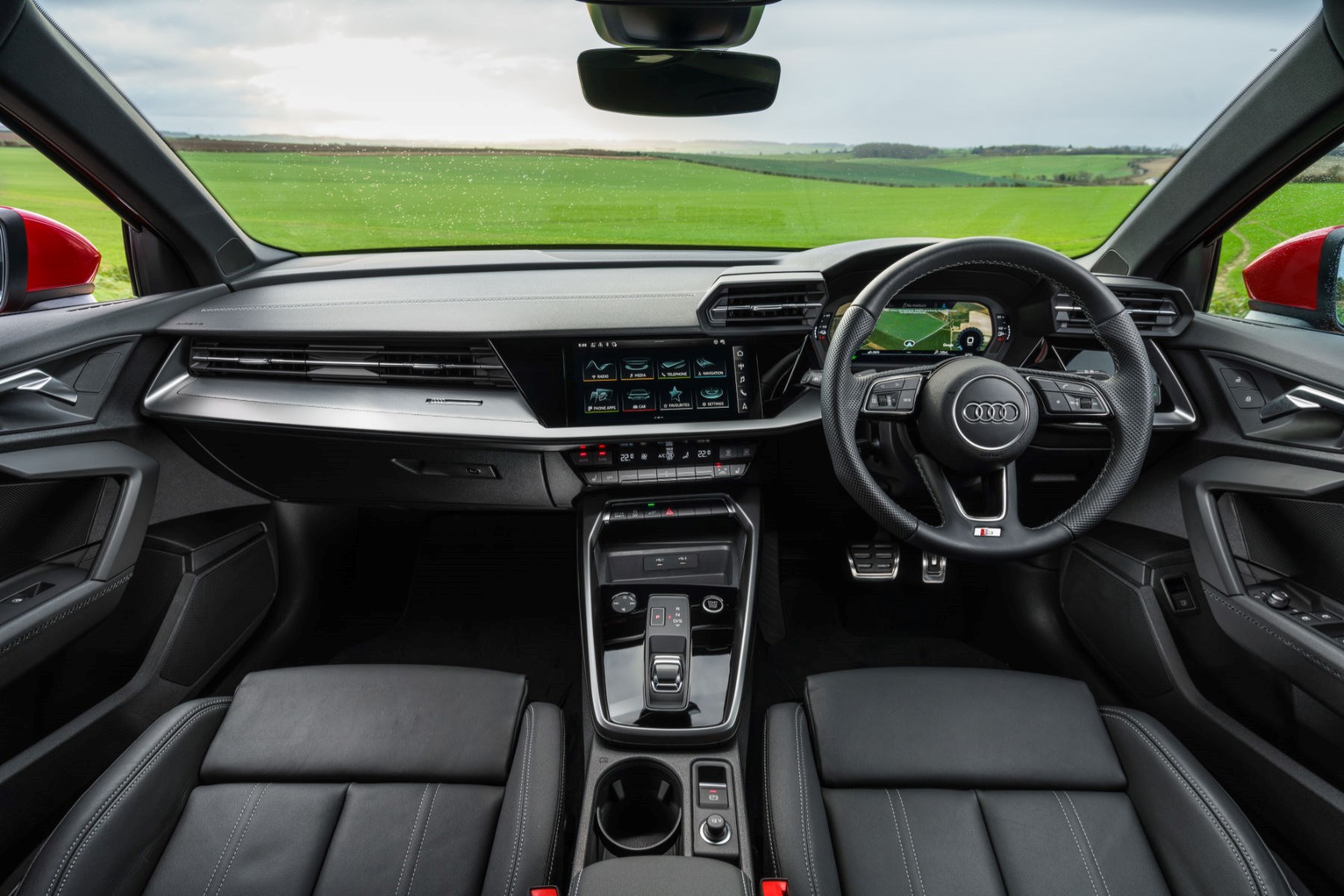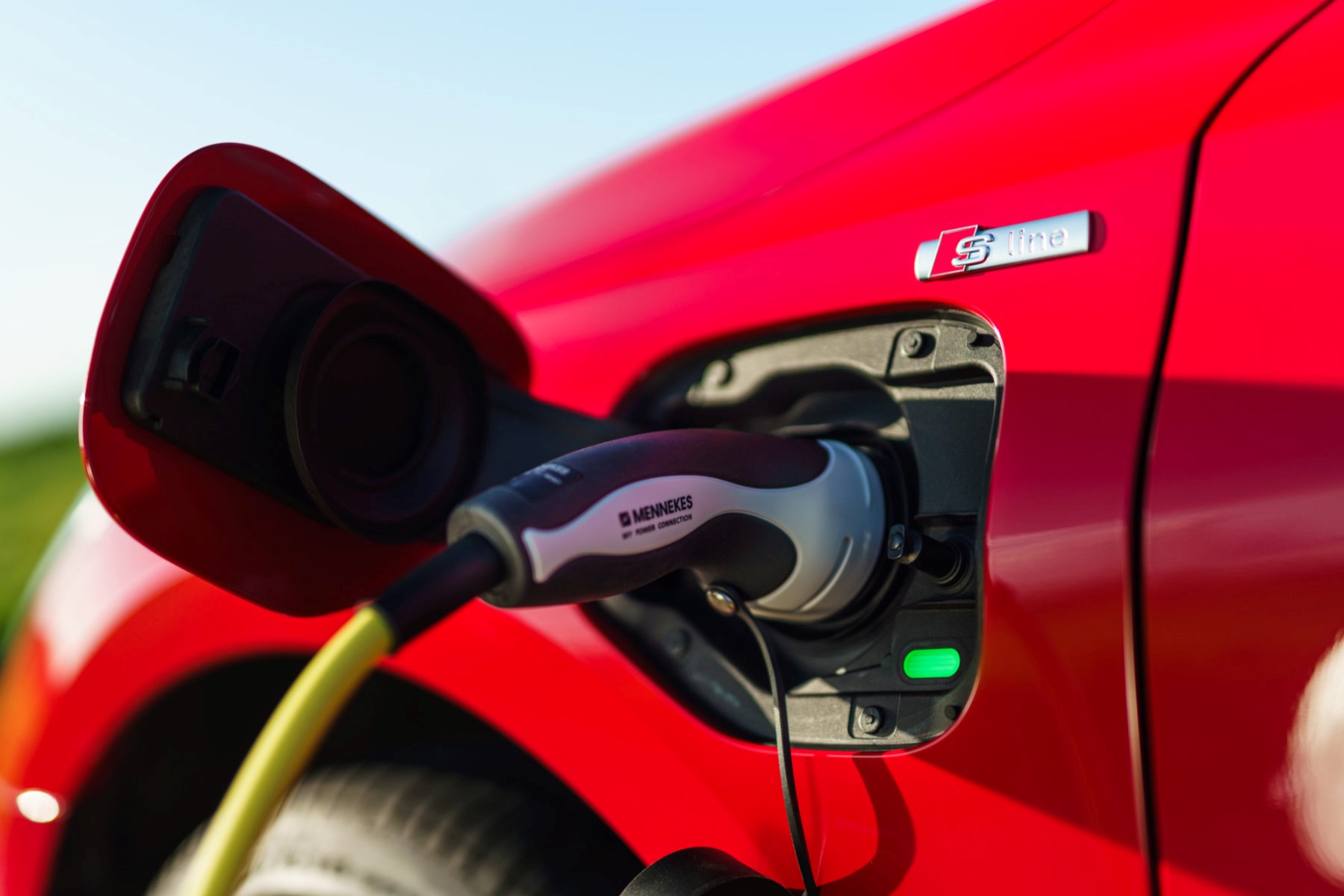► Hybrid A3 driven
► 40 TFSIe relaxed, but expensive
► Practicality greatly reduced
We’ll kick off this review by answering the most important questions for a plug-in hybrid. It’ll go about 30 miles on a full battery, a bit less if you’re airborne down the A1. If you plug in religiously, you should see MPG in the hundreds. And benefit-in-kind (BIK) is 7% for the first year, 8% thereafter.
Right then, now that we’ve answered those let’s get onto the review. What we have here is a plug-in hybrid version of Audi’s popular and premium A3, snappily titled the TFSIe 40. Externally, the only differences between this and a purely internal combustion engined A3 are an additional flap for the charger and a badge on the back.
This means the A3 PHEV is still a cracking looking thing. The side profile especially. There’s a deep sloping crease that runs along the bottom that makes it look very athletic, especially when combined with 18-inch wheels on the S line and S line competition cars.
After a used plug-in? Read our Audi A3 e-Tron review
40 TFSIe specifics
It has a 1.4-litre petrol engine and an electric motor. Combined power is 201bhp/258lb ft, all fed through the front wheels via a six-speed DSG auto. No quattro four-wheel drive or manuals on offer.
Official electric range is 40 miles, but take that with a pinch of salt. It’ll take around four hours to fully charge from a domestic wallbox. CO2 emissions are 29g/km.

What’s it like to drive?
Unsurprisingly the A3 PHEV feels pretty different from other A3s. Default mode is fully electric. When using pure electric power it’s super-smooth and lovely to pootle around in. It doesn’t at all egg you on to push anything.
Press the drive select mode and you’ll also find Dynamic, which is, erm, surprisingly dynamic. It feels much, much more urgent than a 1.5-litre A3. 0-62mph is dealt with in 7.6seconds, nearly two-and-a-half seconds quicker than a 35 TFSI equipped car.
Like the rest of the A3 range, it’s a sharp drive and a lot more direct than a Mercedes A-Class. The six-speed DSG gearbox is snappy and rarely caught out. The combo of this and the perky engine means there is fun to be had with a plug-in A3. There are paddle shifters behind the steering wheel if you’re super keen to live out F1 hybrid-era fantasies, but they’re too small and cheap-feeling to evoke any full on Lewis Hamilton heroics.

Shift the drive select mode to hybrid and it’ll utilise both power sources. With this engaged and a light foot, 40-50-mile trips should see mpg creep into three figures.
Road noise is notable. This is a problem in all A3s, but it’s exacerbated when running with just electricity because there’s no engine to muffle the hubbub coming from the wheels beneath you.
The ride is generally acceptable. At slow speeds it irons out most imperfections, but large ruts at 70+mph can radiate clangs more than we’d like.
How about the interior?
Ah yes. Like with a lot of plug-ins, practicality does take a hit. The electrical gubbins are kept in the back, meaning boot capacity shrinks from 380 in regular A3s to 280 litres.
That makes a big difference. Suddenly this family-sized hatchback has less boot literage than a Ford Fiesta.

Up front, the quality of the interior is strong. The doors in particular feel heavy and close with a reassuring thud. But it isn’t quite up there with the BMW 1-Series, as some materials, like the metallic-looking strip in front of the passenger seat, feel cheap.
Infotainment is brilliant, and comes with a 10.25-inch or 12.3-inch screen and pretty much every bit of software you could want, including the option of wireless Apple CarPlay/Android Auto. Climate controls are on buttons rather than on a touchscreen menu too.
Audi A3 40TFSIe: verdict
The plug-in is a niche product, brilliant for people who can regularly charge and don’t travel far. But the loss of boot space really hampers its everyday practicality.
The 280-litre boot turns the A3 from a usable car for a small family, to one only really suitable for those without kids.
It’s about £4,000 more than a similarly specced 35 TFSI A3 and about £5,000 more than a similar Golf.
For most people we’d recommend a 35 TFSI. But this 40 TFSIe is worth a punt if you’re a company car driver who can’t or won’t make the switch to a full EV.
Check out our Audi reviews
